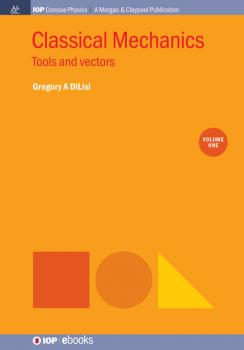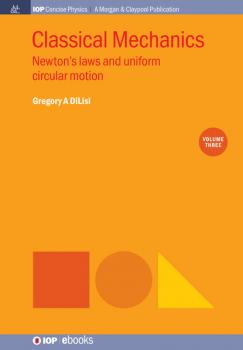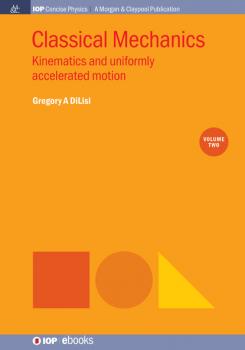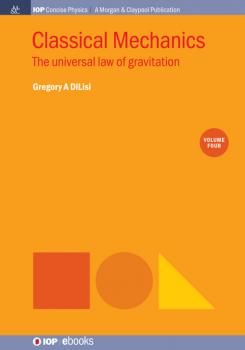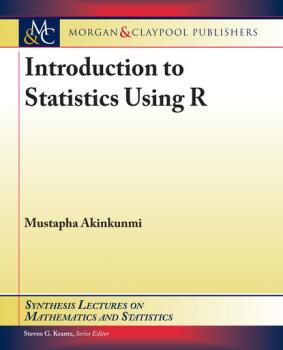ТОП просматриваемых книг сайта:
ЛИТМИР - LITMIR.BIZ - Электронная библиотека
Скачивание или чтение онлайн электронных книг.Аннотация
Classical Mechanics teaches readers how to solve physics problems; in other words, how to put math and physics together to obtain a numerical or algebraic result and then interpret these results physically. These skills are important and will be needed in more advanced science and engineering courses. However, more important than developing problem-solving skills and physical-interpretation skills, the main purpose of this multi-volume series is to survey the basic concepts of classical mechanics and to provide the reader with a solid understanding of the foundational content knowledge of classical mechanics. Classical Mechanics: Tools and Vectors is simply about transmitting information. The conventions used to transmit certain types of numerical information are crucial concepts that must be addressed at the outset of any series on classical mechanics by discussing scalars versus vectors for example.
Аннотация
Classical Mechanics teaches readers how to solve physics problems; in other words, how to put math and physics together to obtain a numerical or algebraic result and then interpret these results physically. These skills are important and will be needed in more advanced science and engineering courses. However, more important than developing problem-solving skills and physical-interpretation skills, the main purpose of this multi-volume series is to survey the basic concepts of classical mechanics and to provide the reader with a solid understanding of the foundational content knowledge of classical mechanics. Classical Mechanics: Newton's Laws and Uniform Circular Motion focuses on the question: 'Why does an object move?'. To answer that question, we turn to Isaac Newton. The hallmark of any good introductory physics series is its treatment of Newton's laws of motion. These laws are difficult concepts for most readers for a number of reasons: they have a reputation as being difficult concepts; they require the mastery of multiple sub-skills; and problems involving these laws can be cast in a variety of formats.
Аннотация
Classical Mechanics teaches readers how to solve physics problems; in other words, how to put math and physics together to obtain a numerical or algebraic result and then interpret these results physically. These skills are important and will be needed in more advanced science and engineering courses. However, more important than developing problem-solving skills and physical-interpretation skills, the main purpose of this multi-volume series is to survey the basic concepts of classical mechanics and to provide the reader with a solid understanding of the foundational content knowledge of classical mechanics. Classical Mechanics: Kinematics and Uniformly Accelerated Motion focuses on the difference between asking, 'How does an object move?' and 'Why does an object move?'. This distinction requires a paradigm shift in the mind of the reader. Therefore, the reader must train themselves to clarify, 'Am I trying to describe how the object moves or why the object moves?'.
Аннотация
Classical Mechanics teaches readers how to solve physics problems; in other words, how to put math and physics together to obtain a numerical or algebraic result and then interpret these results physically. These skills are important and will be needed in more advanced science and engineering courses. However, more important than developing problem-solving skills and physical-interpretation skills, the main purpose of this multi-volume series is to survey the basic concepts of classical mechanics and to provide the reader with a solid understanding of the foundational content knowledge of classical mechanics. Classical Mechanics: The Universal Law of Gravitation focuses on the notion that forces act through their associated fields, which is first introduced when discussing Newton's universal law of gravitation. A huge conceptual leap is required from the reader: an object can cause another object to move without even touching it. This is a difficult concept to reconcile with our everyday experiences but it makes perfect sense when we realize that is exactly how the Earth acts on us. Gravity is able to pull on us even though we are not in direct contact with the Earth. Also, the concept of super-position (and when it is applicable) is introduced. Super-position is crucial to the development of problem-solving skills so it will be illustrated in a number of example problems.
Introduction to Statistics Using R - Mustapha Akinkunmi
Synthesis Lectures on Mathematics and StatisticsDetecting Fake News on Social Media - Kai Chan Shu
Synthesis Lectures on Data Mining and Knowledge DiscoveryАннотация
Информация о книге
Автор произведения Kai Chan Shu
Жанр Интернет
Серия Synthesis Lectures on Data Mining and Knowledge Discovery
Аннотация
This book provides an introduction to the emerging field of quantum thermodynamics, with particular focus on its relation to quantum information and its implications for quantum computers and next generation quantum technologies. The text, aimed at graduate level physics students with a working knowledge of quantum mechanics and statistical physics, provides a brief overview of the development of classical thermodynamics and its quantum formulation in Chapter 1. Chapter 2 then explores typical thermodynamic settings, such as cycles and work extraction protocols, when the working material is genuinely quantum. Finally, Chapter 3 explores the thermodynamics of quantum information processing and introduces the reader to some more state of-the-art topics in this exciting and rapidly developing research field.

